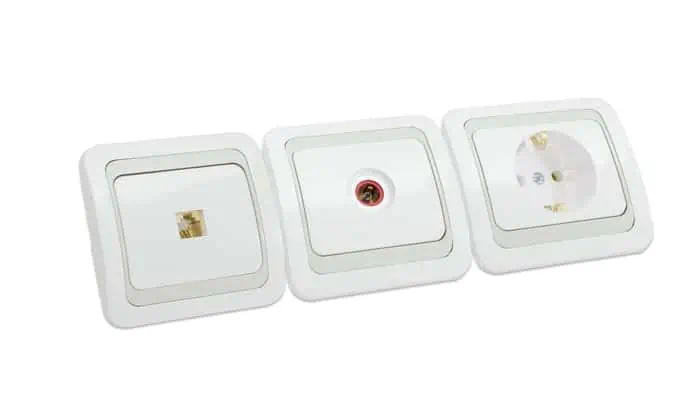It’s quite common that home internet users want to move their router around to different places in the house, but can we do this and still get them to work fine? Can we plug our Wi-Fi routers in anywhere we like?
Searcher intent can be varied with this general question, because some users are asking whether they can plug the router’s power adapter into any power outlet in the home, whilst other users are asking whether they can plug the router’s phone line cable into any phone outlet/socket in the home. Obviously these are two very different questions, so we’ll try to help as many readers as possible by answering both questions in this post.
Here is a bottom line summary answer for both queries:
You can plug a router’s power cable into any wall socket you like in the home, as long as it still remains connected by RJ-11/RJ-45 cable to the original internet access point that was installed by your provider.
You may also be able to connect your router to any phone socket, but performance is not guaranteed in this case and it is preferable to use the original master phone socket.
However, it’s actually quite a complex issue, because internet setup varies in different homes, so we’ll try and cover as many different possible scenarios as possible in this article to answer the question as fully as possible.
Plugging Into Power Sockets
This is more straightforward and common. Does it matter which power outlet a router or combined router modem is plugged into?
It does not matter which power outlet a router is plugged into in a home, but it must remain connected by cable to the original internet access point that was installed by your provider. Depending on your setup, using either a longer RJ-11 or RJ-45 cable can allow you to do this.
Power strips are also not a problem:
A router can be plugged into a power strip without any issues. Most power strips have surge protection equipment that will protect against any power surges and spikes.
In other words, there’s no problem plugging your router’s power lead into a different wall socket in a different room, but that’s the easy part. The router still needs to be connected to the phone line, and if you’re going a long way, it may not reach. You might be able to plug into a different phone socket, but not always (see section further below).
However, it also depends on the setup of your router and modem – are they combined or separate? On newer internet setups, the router and modem are often combined into one device, often called a “router”, or Wi-Fi Hub/Box/Station etc”. On older ADSL setups, the router and modem are still separate, with the router connected to the modem, and the modem then going into the phone line.
Let’s differentiate between the two scenarios:
Scenario #1 – All in One Wi-Fi Router – This is one of the easier and common scenarios – if your router and modem are all contained in one wireless “hub”. Basically, if there’s just one black or white box that’s installed with your internet, it means that both the modem and router are in there somewhere. This is the most common way newer fiber optic internet is installed.
When this is the case, your internet usually comes in through the phone line, firstly feeding into a small phone converter socket that splits off the phone line from the internet if needed. Something like this:
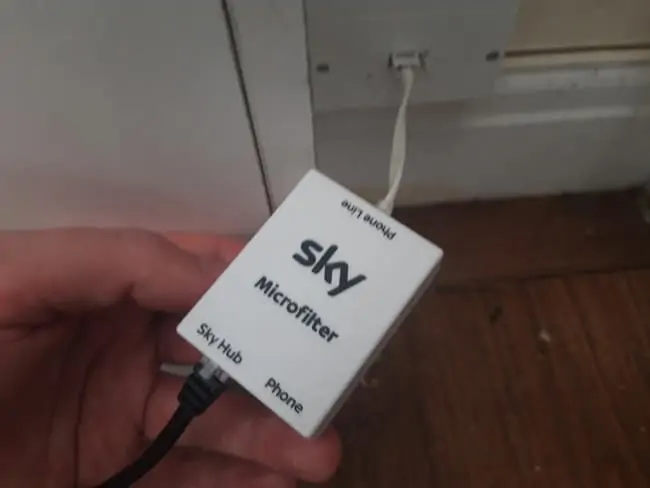
That black cable is an RJ-11 cable (similar to a standard RJ-45 ethernet cable, but not quite the same), and that goes straight into the back of the differently colored Internet/Broadband/DSL/ADSL/Fiber port on the back of your router, something like this:
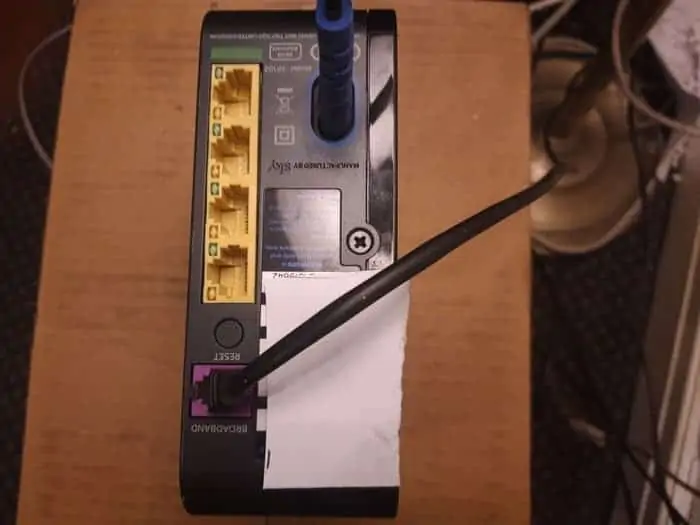
If this is how your internet is set up, you just need to buy a longer RJ-11 cable, to connect to the phone line converter and your router, so you can feed it through to a different room. Be careful though, as RJ-11 and RJ-45 (ethernet) cables look very similar, but in this case, using a longer RJ-45 cable won’t work. You need specifically an RJ-11 phone line cable.
Like this:
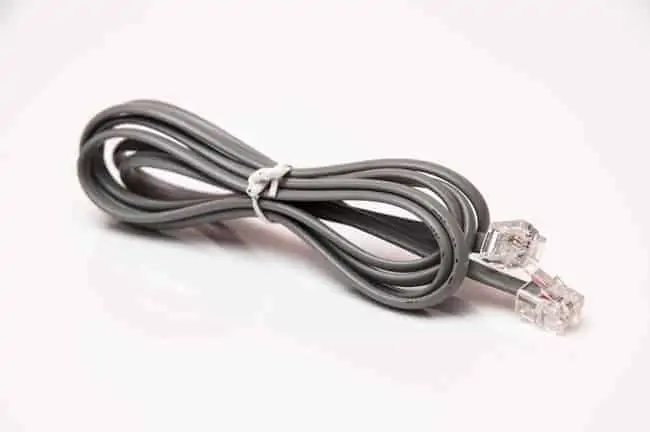
Even longer cables are available, and from personal experience work well up to 20 meters at least.
It looks very similar to an RJ-45 ethernet cable, but the end pin connector is slightly smaller and squarer. The DSL/Internet/Broadband port will also be shaped a little differently to the standard LAN ethernet ports (the yellow ones above) you’d plug devices into on the home network. Check the ports and cable ends carefully to make sure you get the right one. If it’s a WAN RJ-45 port, we cover this in scenario #2 below.
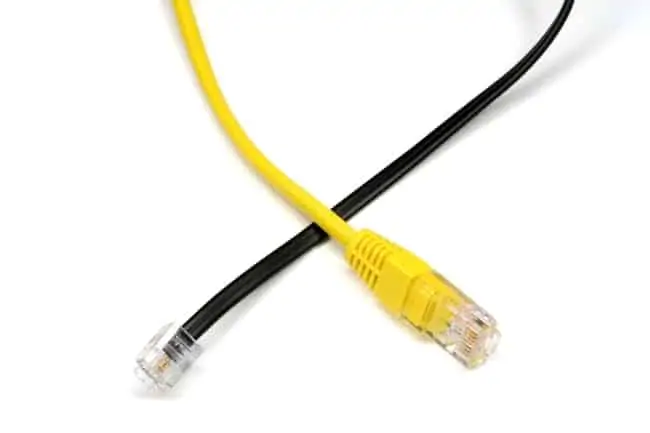
RJ-11 – Black; RJ-45 (Ethernet) – Yellow
Scenario #2 – Separate Modem and Router – Can be the case on older installations, where you actually have two separate devices installed. The phone line often feeds through to a small modem similar to above, but this modem is then in turn connected to the Wi-Fi router, most often in this case by a standard RJ-45 ethernet cable which goes into the differently colored WAN port on the back of the router. Something like this:
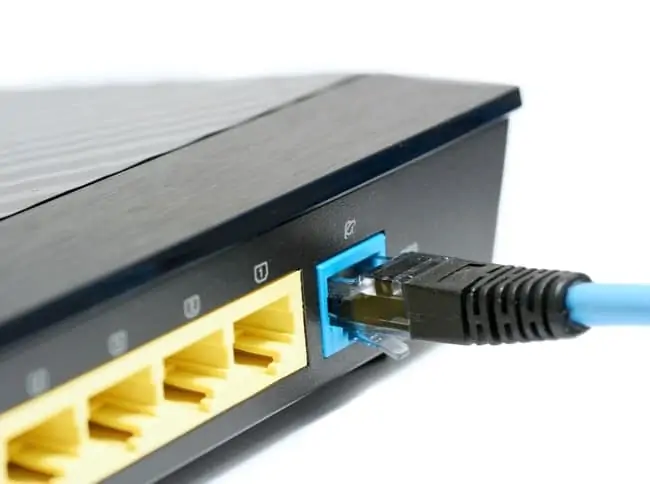
In this case, you just need a longer standard LAN/ethernet cable of the RJ-45 type; the same as you’d use to plug devices into the LAN ports on the back of the router.
Again, remember to check the port on the back of the router to make sure you get the right cable to move the router but keep it connected to the master socket/installation panel.
- DSL/Internet/Broadband/ADSL Port – Slightly smaller, squarer, often on combined modem routers. Needs RJ-11 cable.
- WAN Port – Larger standard RJ-45 ports, same as the LAN ones next to it. Connects router to modem when they are separate. Needs RJ-45 (ethernet) cable.
However your internet is set up, if you can find a suitable power outlet, plus an RJ-11/RJ-45 cable long enough to keep it connected to the master phone line, then you can plug in and use your Wi-Fi router anywhere you want in the home.
See here for our full guide for moving your router to another room, for more on doing this.
Plugging Into Phone Sockets/Outlets?
Now let’s move to the slightly more specific question of whether you can plug your router’s phone line (RJ-11) cable into any phone socket in the home, other than the one it was originally connected to.
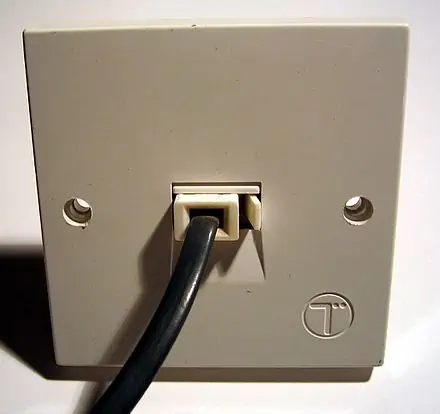
This is more tricky, and the results more varied, but here is a general answer:
It may be possible in some cases to plug a router into a different phone outlet in the home, but performance is not guaranteed, and in many cases there will be interference issues.
As a general rule, it is better to keep a modem/router plugged into the original master phone socket that it was originally installed in.
In general, it’s best to leave the modem/combined modem-router connected to the phone line it’s already in, and instead use longer RJ-11/RJ-45 cables if you want to move the router to another room, rather than connected it to a different phone socket.
The phone master socket is where the phone line actually enters your home and is usually based somewhere near the front door. ISP’s almost always recommend that you use the master socket for the best signal, and also you must use a micro-filter to separate out signals any time you are using phone and internet from the same outlet.
Using different phone outlets increases noise and interference, and therefore will not deliver the best performance, if it works at all.
If you try and plug your router into a different phone socket, you may or may not get it to work, and it is impossible to give a definitive answer. Also, if you do get it to work, you may get greatly reduced speeds and interference problems. Results will be worse if you don’t use a micro-filter, like the one pictured in the section above.
Plugging Into Ethernet Outlets
Let’s also cover ethernet outlets, because some homes also have these in different rooms as well:
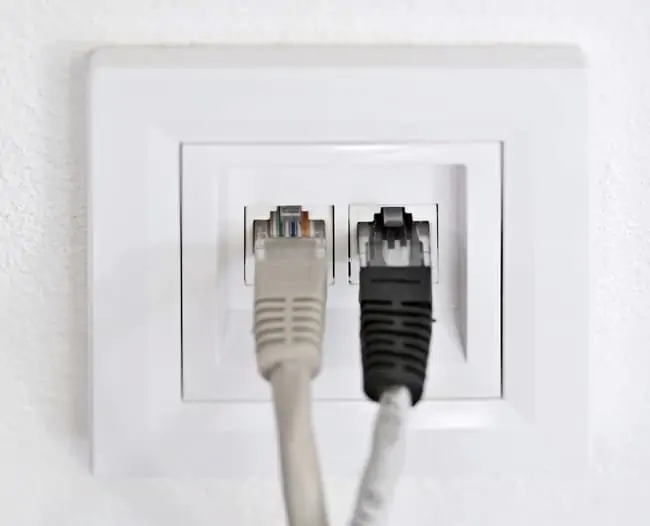
Can you plug your router into any of these and also get internet access?
You can plug a router into any ethernet port in the home and and get internet if it is a second router to complement the first one. However, plugging a single router into an ethernet wall outlet will not work. A modem-router must be connected to the phone line master socket to provide internet access.
In other words, you can plug additional routers into ethernet wall outlets to expand home networks, as long as you have a primary router installed in the master phone socket. However, always be sure to connect secondary routers via the LAN ports on the router, not the differently colored WAN port that should be reserved only for the connecting the primary router to the phone line or modem (see here for help on this).
Also, it can be complicated and lead to Double NAT and DHCP errors if you have two routers operating at the same time, so there are some steps to take.
See here and here for some useful forums on this issue.
Plugging Into Coaxial Outlets
Some high speed and hybrid internet services are setup using Coaxial cables, which are different to the standard RJ-11/RJ-45 setup, but some homes also have multiple coaxial access points installed. Can you plug a router into any one of these and get it to work?
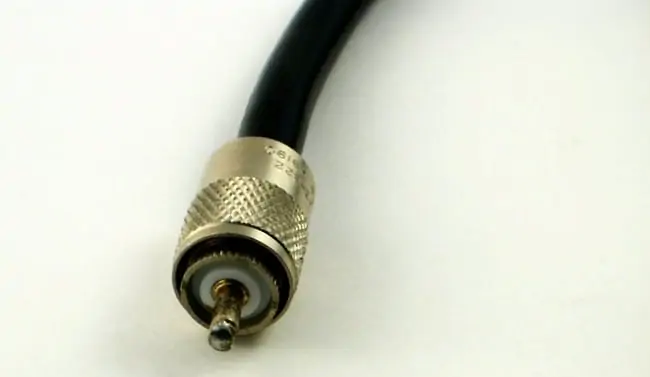
Your router can be connected to another coaxial outlet if it has been configured to receive internet signals by your ISP when your service was set up.
Again, this depends on who set up your internet and how they did it. Did they enable internet to all coax outlets, or just one? Therefore there isn’t a definitive answer on this one and it will vary in different homes.
See our guide on moving your router to another room, where we have a section on using coaxial extenders to move your router.
See also this helpful guide on testing different coaxial outlets to see which offers a good signal.
What You Need To Get Online In The Home
Some users might be asking this question because they have a spare router lying around in the home, and want to know if they can get it to work by plugging it into any random phone line or other port in the home, and get internet and Wi-Fi this way.
Let’s answer this by giving a specific list of what you need to get online with fixed line internet in any home:
- A live, activated internet service from an Internet Service Provider (ISP)
- Either a standalone router AND and standalone modem, connected together (older setups); OR
- A combined router-modem (newer setups)
- If setting up the internet for the first time, you’ll also often need to some basic initial modem/router configuration to get started. Some ISP’s have “do it yourself” self installation guides on this; others still send round technicians to set it up for you.
In other words, just plugging a router into any phone line (even the master socket) won’t work unless you also have an installed and activated internet service from an ISP as well (eg. Comcast, BT etc). See here where we cover this. Unfortunately, you can’t just plug a spare router in and get Wi-Fi or internet with having an internet service installed.
Contacting Your ISP For Assistance
We’ve tried to be as helpful as possible in this post by covering all the possible scenarios someone might want to plug their router in in different places. However, all home networks and setups are different, so if you’re still not sure, it’s best to open up a live chat with your ISP, and ask them for help with whatever you want to do.
Be sure to specify whether you:
- Are looking to move your router but keep it connected to the master socket, and just plug it into a different power outlet, OR:
- Are looking to plug your router’s phone line cable into a different phone socket than the one it was originally installed in.
The first one’s often pretty straightforward and easy – you might just need a longer phone line/ethernet cable to connect the router to the separate modem or directly into the phone line for combined router-modems.
It’s the second one that can be more problematic. ISPs usually prefer that you use the original master phone socket they initially installed the router/modem in. However, depending on your setup, you might be able to connect it to other phone lines/coax sockets around the home, but there might be interference/performance issues, or it might just not work. It varies greatly.
However, here are some links to support pages for major ISPs:
- America:
- United Kingdom:
- Canada:
- Australia:
Recent Posts
This is a common question in home networking, as sometimes we find that the original place our Wi-Fi router is installed is not really optimal, and we want to know if we can move it to another room....
This is a common scenario home internet users want to ask about. Many homes in America especially have pre-installed ethernet ports around the home, so can we just plug any router we have lying...
